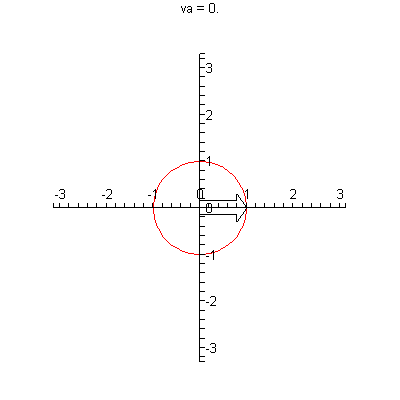Magnetohydrodynamics
For jet simulations, the dynamics of highly-ionized plasma is essential. In contrast to hydrodynamics, which deals with neutral matter (e.g. simulations for the weather forecast), magnetohydrodynamics (MHD) describes the motions of fluids that are composed of charged particles - in the case of ionized hydrogen, these are protons and electrons. The fluid carries no macroscopic charge, but the protons as well as the electrons are additionally accelerated by the Lorentz forces of magnetic fields.
As opposed to hydrodynamics, where we only have waves moving by the speed of sound (3 characteristics), there are three kinds of waves in MHD (7 characteristics): the Alfvén wave, the fast and the slow MHD wave. The propagation of these waves is governed by the direction and strenght of the magnetic field.
The following animation demonstrates the properties of the three kinds of MHD waves in a Friedrichs diagram. Shown are the phase velocities in units of the adiabatic sound speed in all directions. The arrow has a length corresponding to the speed of sound and the direction of the magnetic field. The Alfvén speed, which is proportional to the strength of the magnetic field, is varied and shown in the animation's title (again in units of the sound speed). So this animation shows, how fast the MHD waves propagate into the different directions depending on the magnetic field strength.

The outer wave (red) is the fast MHD wave, then come (towards the center) the Alfvén wave (black) and the slow MHD wave (blue). For a zero magnetic field (v_a = 0), the fast MHD wave embodies the usual sound wave, that propagates into all directions with the same speed. With stronger magnetic fields, the Alfvén wave and the slow MHD wave appear. They do not propagate in the direction perpendicular to the magnetic field.
Please note, that the moving curves do not show the travelling sound waves but only the speed of the MHD waves into different directions relative to the magnetic field.
Animations for very weak and very strong magnetic fields are also available (zoom in and zoom out).
